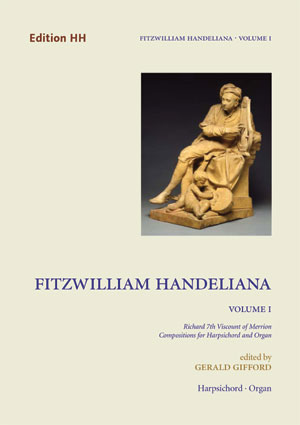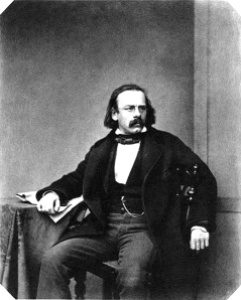In 2009 the music publisher Edition HH launched Fitzwilliam Handeliana, a series of publications of Handelian music inspired by manuscript holdings in The Fitzwilliam Museum, Cambridge. The first volume in the series, Compositions for harpsichord and organ, is a collection of works by the founder himself: Richard, 7th Viscount Fitzwilliam of Merrion (1745–1816). Edited by Gerald Gifford, the museum’s Honorary Keeper of Music, the volume presents rarely seen works by one of Händel’s ardent champions.
Cowshed soundscaping
Cows respond strongly to changes in the muted, subliminal strata of the cowshed soundscape; the elimination of such sounds, or their masking through music and other designed sound foregrounds, causes pronounced disturbances in the animals’ physiology and behavior.
A positive soundscaping for cowsheds must take advantage of the subjective implications of sounds such as the first moo of a newborn calf, which carries the strongest psychological impact even if it cannot be described as aesthetically beautiful.
This according to “The blessed noise and little moo: Aspects of soundscape in cowsheds” by Maru Pöyskö, an essay included in Soundscapes: Essays on vroom and moo (Tampere: Tampereen Yliopisto, Kansanperinteen Laitos, 1994). Below, a newborn calf demonstrates the little moo.
Related article: Radio for cows
Filed under Acoustics, Animals, Curiosities, Nature, Science
Hans Christian Andersen, music critic
As many people know, Hans Christian Andersen, whose children’s stories have proven to be his most widespread source of fame, was the most prominent Danish author of the nineteenth century. As fewer people know, he enjoyed a brief career as an opera singer and dancer at Det Kongelige Teater in Copenhagen, and in later years he went on to produce opera libretti for the Danish and German stage. He made 30 major European tours, and on each of these trips he regularly attended opera and concert performances, recording his impressions in a series of travel diaries; a well-informed listener, his reflections comprise valuable sources for the study of music reception during this period.
Over the course of his life Andersen embraced and later rejected performers such as Liszt, Maria Malibran, and Ole Bull, and his interest in opera and instrumental music underwent a series of dramatic transformations. In his final years he promoted figures as disparate as Wagner and Mendelssohn-Bartholdy, while strongly objecting to Brahms. Although these changes in taste might be interpreted as indiscriminate, such shifts in opinion were not contradictory—rather, they were quite logical given the social and cultural climate.
This according to “Music history as reflected in the works of Hans Christian Andersen” by Anna Harwell Celenza, an essay included in our recently published Music’s intellectual history.
Filed under Literature, Reception, Romantic era
Bokoor African Popular Music Archives
Established in 1990 by the journalist, writer, and musician John Collins, the Bokoor African Popular Music Archives is a Ghanaian NGO that aims to preserve, promote, and disseminate Ghanaian and African popular and traditional performance, and to act as a facilitator, consultant, and resource center for various African arts projects in Ghana and the international African community. It also maintains a database and archive of contemporary African arts and performance traditions, and assists and networks with other collectors and organizations doing similar cultural, educational, and archival work. The Archives include freely accessible books, articles, and sound and video recordings.
Filed under Africa, Ethnomusicology, Popular music, Resources
Iconoclastic romanticism
Although the pedagogue and author Wilhelm Heinrich von Riehl (1823–97) was not formally trained in music, he wrote extensively about the social significance of music making, and he argued for an approach that treated music history as cultural history. He criticized music histories centered on great composers, and advocated a more inclusive cultural approach that appreciated the unsung heroes and everyday life of the past.
Riehl was even more critical of his own time, lamenting the costs of transforming Germany into a modern industrial society; while he called for a more encompassing definition of Germany’s musical heritage, he rejected all of the art music of the day, and particularly railed against the works of Wagner. Riehl, therefore, is an ambiguous figure: He championed the idea of music as culture, but he explicitly rejected a future for music as art.
This according to Sanna Pederson’s “An early crusader for music as culture: Wilhelm Heinrich Riehl”, an essay included in our recently published Music’s intellectual history.
Comments Off on Iconoclastic romanticism
Filed under Ethnomusicology, Literature, Musicologists, Romantic era
From girls to women

Designed and edited by Lev Weinstock and Suzel Ana Reily and produced by the Department of Social Anthropology at The Queen’s University of Belfast, Venda girls’ initiation schools presents all of the available materials resulting from John Blacking’s now-legendary fieldwork, undertaken from May 1956 through December 1958, documenting the songs, ceremonies, and dances of the girls’ initiation cycle of the Venda people of the Sibasa district of the Northern Transvaal, South Africa.
The resource includes photographs, sound clips, video clips, texts with translations, transcriptions, and all of Blacking’s writings on this and related subjects.
Comments Off on From girls to women
Filed under Africa, Ethnomusicology, Resources
The Frog blues & jazz annual
Launched by Frog Records in 2010, The Frog blues & jazz annual is a book series that presents original research and articles on early jazz and blues. The inaugural issue, The musicians, the records & the music of the 78 era, includes articles about the Mississippi Jook Band’s Graves brothers, the pianist Arnold Wiley, and the vocalist Ida Cox.
Comments Off on The Frog blues & jazz annual
Filed under Jazz and blues, New series
Basse danse with attitude I
The jurist Antonius deArena (fl. ca. 1520–50) wrote several lengthy poems, including Ad suos compagnones studiantes qui sunt de persona friantes bassas danzas de nova bragarditer, translated as “Rules of dancing” by John Guthrie and Marino Zorzi (Dance research: The journal of the Society for Dance Research, vol. 4, no. 1 [autumn 1986], pp. 3–53). This treatise describes the basse danse and other French social dances of the period in considerable detail, interspersing the technical information with colorful and humorous advice regarding etiquette and deportment.
“I exhort you all to learn the dances in which you may bestow prolonged kisses” he suggests, “there is no employment more delightful for you, nor for me.” He further admonishes “never doze during the ball, please, my good companion; sleeping during the dance is like denying God.”
Finally, he counsels “afterwards remember to give drinks to everyone and then the genial wine, my friend, will assume its sway, since Ovid sings that the poor wretch becomes a cuckold as soon as the wine flows at the banquets.”
Related article: Basse danse with attitude II
Filed under Curiosities, Dance, Humor, Performance practice, Renaissance
Was Kuhač there first?
In his 1882 unpublished essay Die Eigenthümlichkeiten der magyarischen Volksmusik, Franjo Ksaver Kuhač (1834–1911) used and explained the term musicology. Since the Vierteljahrsschrift für Musikwissenschaft appeared three years later with Guido Adler’s definition of the term, Kuhač assumed—and he died with this conviction—that he was the first to have coined it.
Kuhač was also an early visionary in comparative musicology, a stream that fed into the beginnings of ethnomusicology. As he saw it, the discipline’s task was to determine the laws of any given nation’s traditional music so these could be used as the basis for a national style in art music; his overarching goal was to create an awareness of Croatian national music and to establish its place in the context of Central European culture.
This according to “Franjo Ksaver Kuhač and the beginnings of music scholarship in Croatia” by Zdravko Blažeković, an essay included in our recently published Music’s intellectual history.
Comments Off on Was Kuhač there first?
Filed under Ethnomusicology, Europe, Musicologists











